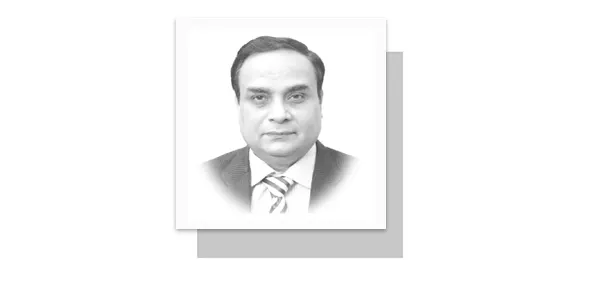THE successful holding of the 4th Tashkent International Investment Forum (TIIF) 2025, with the participation of more than 8,000 delegates — including nearly 3,000 international guests from almost 100 countries — has once again established the strategic importance of the Republic of Uzbekistan as an ideal platform for sustainable economic cooperation, investment, joint ventures and a collaborative and consultative mechanism for qualitative industrialization.
It also showcases the trustworthy “nesting” of international “migratory birds” of investment on Uzbek soil.
Additionally, the rigorous brainstorming by international experts, policymakers and business leaders to explore meaningful regional trade integration, robust chemical sector development and sustainable investment strategies in Uzbekistan and Central Asia vividly reflects the strategic effectiveness of President Shavkat Mirziyoyev’s structural economic reforms, which continue to attract growing inflows of foreign direct investment (FDI).
In 2025, the forum was held on an “unprecedented” scale, with investment projects across strategically important sectors such as energy, infrastructure, agriculture, mining, digital technologies and green technologies seeking international cooperation from international partners and corporations.
Interestingly, staging of the “First National Exhibition of Uzbekistan’s Industrial and Investment Potential”, featuring 90 companies from more than 10 fast-growing sectors, including petrochemicals, engineering, construction, and food processing highlighted the real essence and potential of the country.
It offered a “unique” opportunity for investors to gain a comprehensive understanding of Uzbekistan’s potential and investment-ready projects.
Comparative studies reveal that since its inauguration in 2022, the TIIF has rapidly evolved into a “landmark” global platform that showcases Uzbekistan’s dynamic economic potential and its emerging position as a strategic investment destination gearing economic modernization and openness and underscoring the essential role of the FDIs in fuelling sustainable growth and innovation.
The “success story” of TIIF has opened a new window into the evolving landscape of New Uzbekistan opening its doors to global collaboration, driven by stability, vision, and opportunity.
Moreover, the speech of President Mirziyoyev was “holistic”, comprehensive, visionary, integrated and “futuristic” covering all aspects of attracting FDIs, promoting joint ventures and further enhancing international cooperation by providing state’s guarantees, suitable business & investment friendly environment, protection of law, regulatory mechanism and last but not least, mutually beneficial partnerships & propositions.
Remarkably, President Mirziyoyev positioned Uzbekistan as a dynamic hub for sustainable investment, calling for stronger global cooperation and outlining the country’s ambitious reform agenda focused on green energy, digital transformation, financial innovation and the strategic development of critical minerals.
In doing so, he effectively highlighted the true economic potential and opportunities within Uzbekistan’s diverse macroeconomic sectors and productive channels.
Evidently, the presidential outlining of four strategic priorities mainly the transition to a green economy, the rise of digital technologies and artificial intelligence, the modernization of the financial sector, and the growing global demand for technological minerals has clearly demonstrated Uzbekistan’s strategic priorities revolving around green transformation, digitalization, modernization and financial integration.
Moreover, the production of high value-added goods from minerals and construction of “Metals of the Future” techno parks in the Tashkent and Samarkand regions,” prominently exhibiting President Mirziyoyev’s valuable vision of development of metals & minerals.
Inclusion of rare earth elements would be a value addition which must be jointly offered to international corporations.
Obviously, Uzbekistan’s president put forward an innovative and workable initiative I.e.
investors implementing full-cycle operations from geological exploration to the production of finished goods will be granted a rent tax refund for 10 years indicating a giant step in the right direction with lots of multiplier socio-economic dividends in the future.
Amazingly, under President Mirziyoyev, Uzbekistan’s GDP has doubled over the past eight years, and trade with neighbouring countries has increased by more than 3.5 times.
The Uzbek leader promoted the “Concept of an Integrated Region for Investment and Trade” in Central Asia by establishing new financial mechanisms to support regional projects, emphasizing that working together is the way forward to transform Central Asia into a region of peace and prosperity.
On the second day of the TIIF, over 30 investment agreements were signed with international companies such as ACWA Power, Bell Engineering Software Technologists, HYPER Partners, Shaanxi Road and Bridge Group, TK-CH GROUP, and Uz Oman Capital.
These signings clearly demonstrated the diversity of investments, the dynamism of Uzbekistan’s economy, the productivity of its industrial channels, good governance, the rise of corporate culture, and, most importantly, the futuristic dimensions of its Vision 2030.
In summary, the MOU signed between the Fund for Reconstruction and Development of the Republic of Uzbekistan and Uz Oman Capital for establishing the Central Asia Direct Investment Fund was both “notable” and incredible.
Additionally, agreements on key projects—including a solar power plant with energy storage systems, a 1,400 MW thermal power plant in the Tashkent region, underground storage development, youth education programs, recycling plants for medical, hazardous, and agricultural waste, bamboo cultivation, and gold deposit development—have become “symbols” of Uzbekistan’s resounding success.
Notably, the construction of photovoltaic solar power plants with a capacity of 500 MW in Besharik (Fergana) and 200 MW in Pap (Namangan), along with the preparation of design documentation for a new road linking Sariosiyo (Surkhandarya) with Kashkadarya region, further highlights Uzbekistan’s commitment to sustainable growth, energy development, and regional connectivity.
It seems that the renewable energy sector will receive a further boost with agreements to build photovoltaic solar power plants in Fergana and Namangan regions, along with a concentrated solar power plant project.
Infrastructure development, financial integration, development of real estate, smart living, hybrid agriculture, exploration of metals & mining, blue & green hydrogen power generation, EVs, lithium batteries and development and preservation of water resources have also achieved significant international cooperation.
—The writer is President, Pak-China Corridor of Knowledge, Executive Director, CSAIS, regional expert: China, CPEC & BRI. (mehmoodulhassankhan@yahoo.com)


















